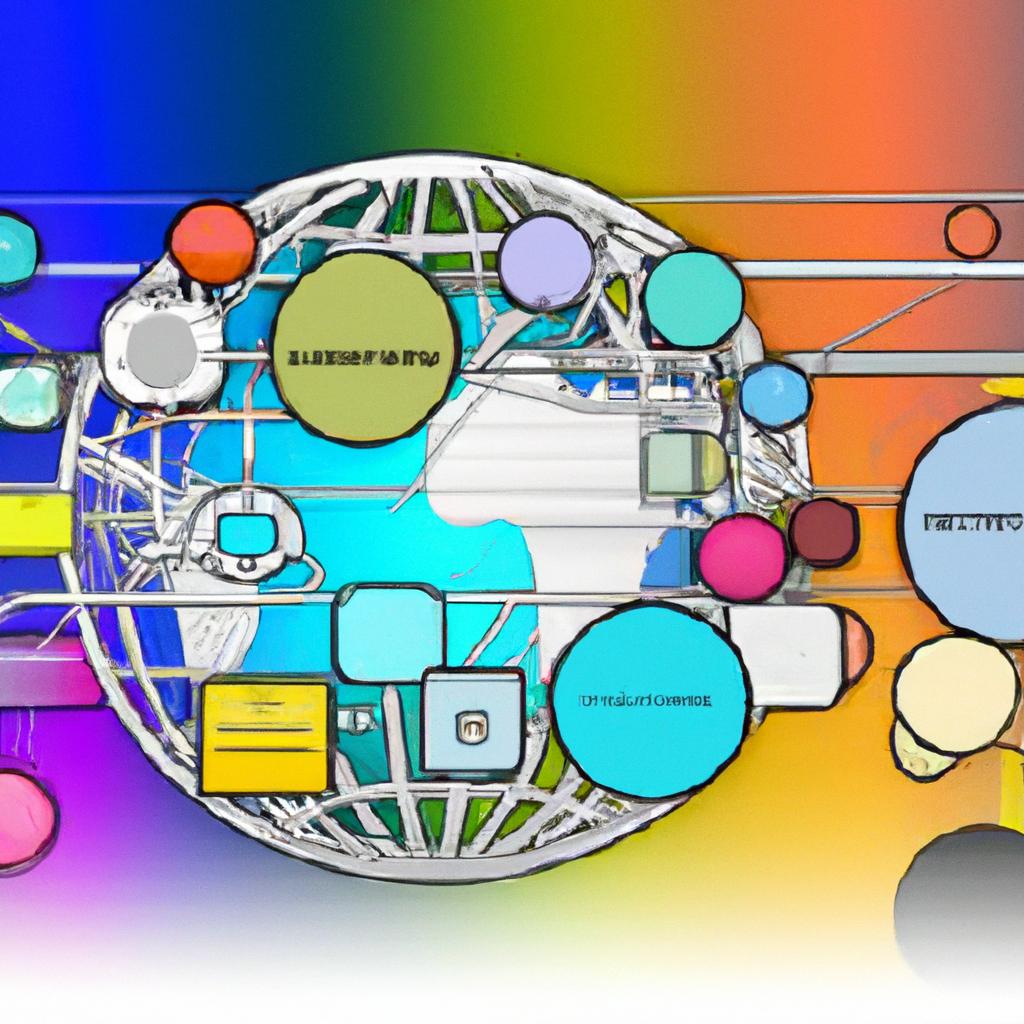
The Future of Web Design: Predictions and Trends
In the ever-evolving world of technology, the landscape of web design is constantly shifting. From sleek minimalist designs to interactive animations, the future of web design is full of exciting possibilities. In this article, we will explore the predicted trends and innovations that will shape the future of web design. So buckle up and get ready to take a glimpse into the future of digital aesthetics.
Table of Contents
- Innovative Technologies Shaping the Future of Web Design
- User Experience Revolution: Personalization and Interactivity
- Emerging Design Trends: Minimalism, Dark Mode, and Immersive Experiences
- Expert Tips for Navigating the Evolving Landscape of Web Design
- Q&A
- The Way Forward
Innovative Technologies Shaping the Future of Web Design
From voice technology to artificial intelligence, the realm of web design is constantly evolving with innovative technologies. One trend that is shaping the future of web design is the rise of chatbots. These AI-powered virtual assistants are revolutionizing user experience by providing instant support and personalized interactions. Chatbots can enhance customer engagement and streamline communication, making websites more user-friendly and efficient.
Another exciting development in web design is the use of virtual reality (VR) and augmented reality (AR) technology. By integrating VR and AR elements into websites, designers can create immersive and interactive experiences for users. These technologies allow for unique storytelling opportunities and engaging visual content. From 360-degree product views to virtual tours, VR and AR are unlocking new possibilities for web design that were previously unimaginable.
User Experience Revolution: Personalization and Interactivity
With the rapid advancement of technology, the user experience landscape is constantly evolving. One of the key trends shaping the future of web design is personalization. Users are increasingly expecting tailored content that speaks directly to their needs and interests. This can range from personalized recommendations based on past behavior to customizing the layout and design of a website according to individual preferences.
Another game-changing aspect of the user experience revolution is interactivity. Websites are no longer static pages but dynamic platforms that engage users in meaningful ways. Interactive elements such as quizzes, polls, and live chat features are becoming more prevalent, allowing for real-time engagement and feedback. This trend not only enhances the user experience but also fosters a sense of community and connection between brands and their audience.
Emerging Design Trends: Minimalism, Dark Mode, and Immersive Experiences
With the constantly evolving landscape of web design, it’s important for designers and developers to stay ahead of the curve by keeping up with the latest trends and predictions. Minimalism, dark mode, and immersive experiences are three design trends that are shaping the future of web design. Minimalism emphasizes clean, simple designs that focus on usability and functionality. Dark mode, on the other hand, provides a sleek and modern look that reduces eye strain and conserves battery life. Immersive experiences use cutting-edge technologies like augmented reality and virtual reality to create engaging and interactive user experiences.
As we look ahead to the future of web design, it’s clear that these trends will continue to play a significant role in shaping the way websites are designed and developed. By incorporating elements of minimalism, dark mode, and immersive experiences into their designs, designers can create visually stunning and user-friendly websites that capture the attention of users and keep them engaged. The key to success in the ever-changing world of web design is to embrace these trends and stay innovative in order to stand out in a crowded online landscape.
Expert Tips for Navigating the Evolving Landscape of Web Design
As the digital landscape continues to evolve at a rapid pace, web designers must stay ahead of the curve to create engaging and user-friendly websites. One prediction for the future of web design is the increasing use of AI and machine learning to personalize user experiences. By analyzing user behavior and preferences, AI can provide tailored content and recommendations that enhance the overall user experience.
Another trend to watch out for is the continued rise of mobile-first design. With more users accessing websites on mobile devices, ensuring a seamless and responsive design across all platforms is crucial. Integrating animations and microinteractions can also help create a more engaging experience for users, keeping them on your site longer. In addition, optimizing website performance through techniques such as lazy loading and image optimization will be key in improving site speed and user satisfaction.
Q&A
Q: What are some exciting predictions for the future of web design?
A: In the future, we can expect to see a rise in immersive technologies such as augmented reality and virtual reality being integrated into web design. Personalization and interactivity will also be key trends, creating a more customized and engaging user experience.
Q: How will AI impact web design in the coming years?
A: AI will play a significant role in shaping the future of web design by enabling websites to provide more tailored content based on user behavior and preferences. Chatbots powered by AI will also become more prevalent, offering users instant assistance and support.
Q: What role will mobile devices play in the evolution of web design?
A: With the majority of internet users now accessing websites on mobile devices, responsive design will continue to be a top priority for web designers. Mobile-first design approaches will be essential to ensure a seamless user experience across all devices.
Q: How will the increasing focus on accessibility influence web design trends?
A: As awareness around accessibility grows, web designers will need to ensure that their designs are inclusive and cater to a diverse range of users. Incorporating features such as screen reader compatibility and color contrast optimization will become more common in web design practices.
Q: What emerging technologies are expected to revolutionize the way we design websites?
A: Technologies such as voice search, motion UI, and progressive web apps are set to revolutionize the way websites are designed and developed. These innovations will enable websites to be more interactive, intuitive, and user-friendly.
The Way Forward
As we gaze into the crystal ball of web design, the future seems both exciting and unpredictable. With emerging technologies and changing user behaviors, the landscape of web design is constantly evolving. From AI-powered websites to immersive 3D experiences, the possibilities are endless. The key to staying ahead in this ever-changing industry is to embrace innovation, adapt to new trends, and never stop learning. As we step into the unknown territory of tomorrow, let’s continue to push the boundaries of creativity and design. The future of web design is bright, and the only limit is our imagination. Exciting times lie ahead, so let’s embark on this journey together and shape the future of web design.


